Wednesday, February 14, 2018
The Birth of Modern Scrapbooking
February 14, 2018
This article is from Scrapbook.com
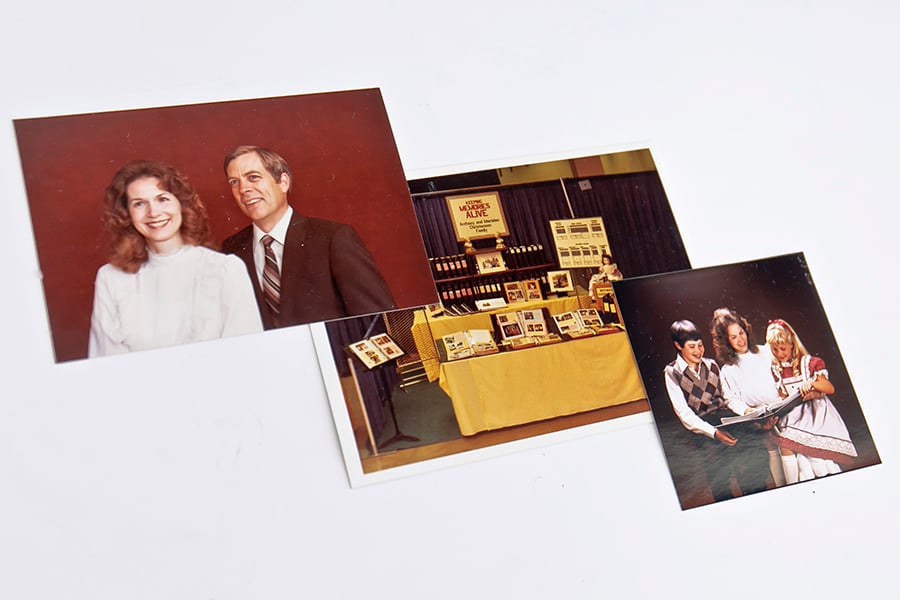
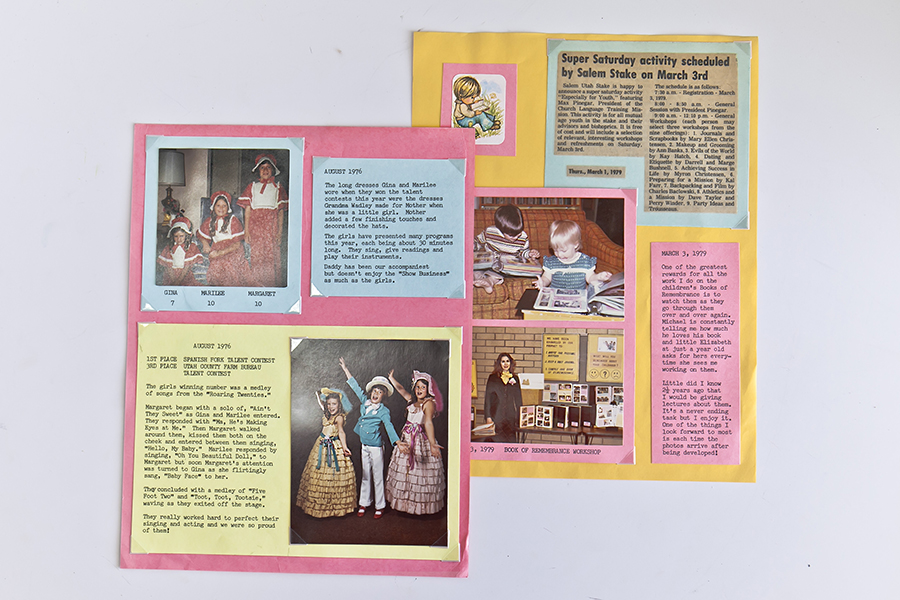
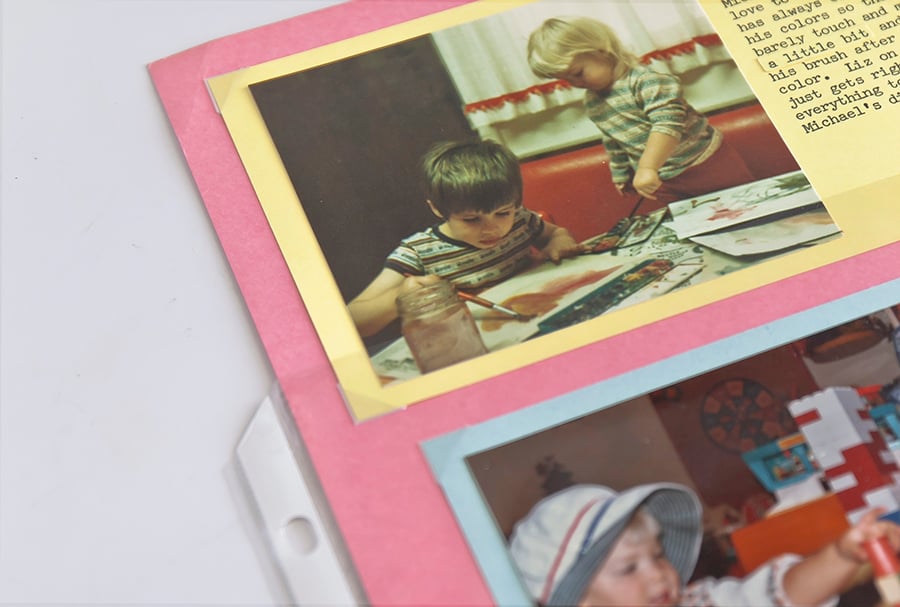
By the late 1990s, however, the standard scrapbook page size was shifting to a larger 12" x 12" square page that better accommodated 4” x 6” photos. Albums began to be available in a variety of types of bindings: strap hinge, post, and ring, to suit a growing community's growing needs. Some strap hinge albums still had paper pages similar to those of the early scrapbooks, but albums full of sheet protectors (to allow each page to have a different background paper) were increasingly becoming the scrapbook format of choice.
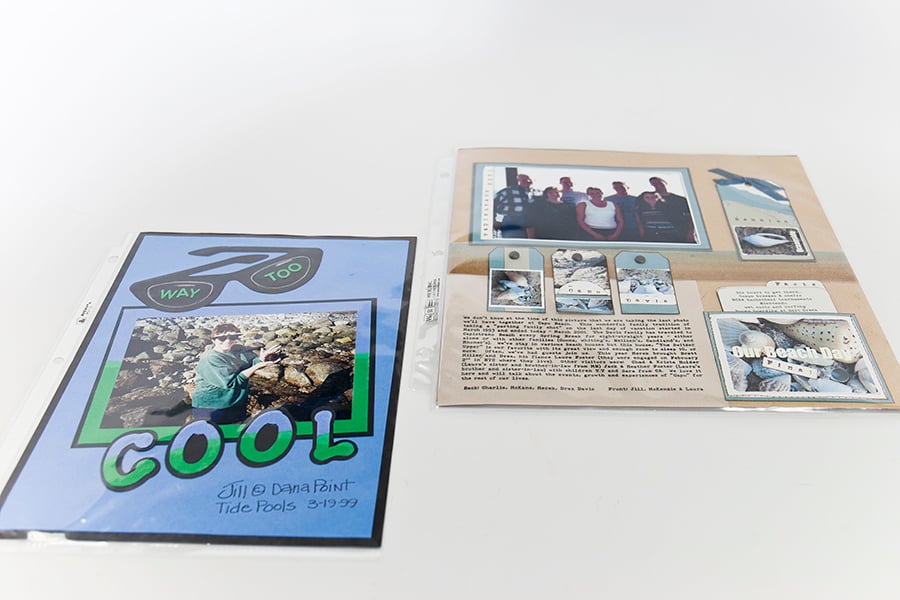
The first consumer digital camera was launched to the photography market in 1990. By 2006, Nikon and Canon had stopped development on new film cameras and had shifted all new camera production to entirely digital models. It had been barely over 15 years since the first digital camera was sold, and now film was going the way of the horse and buggy.
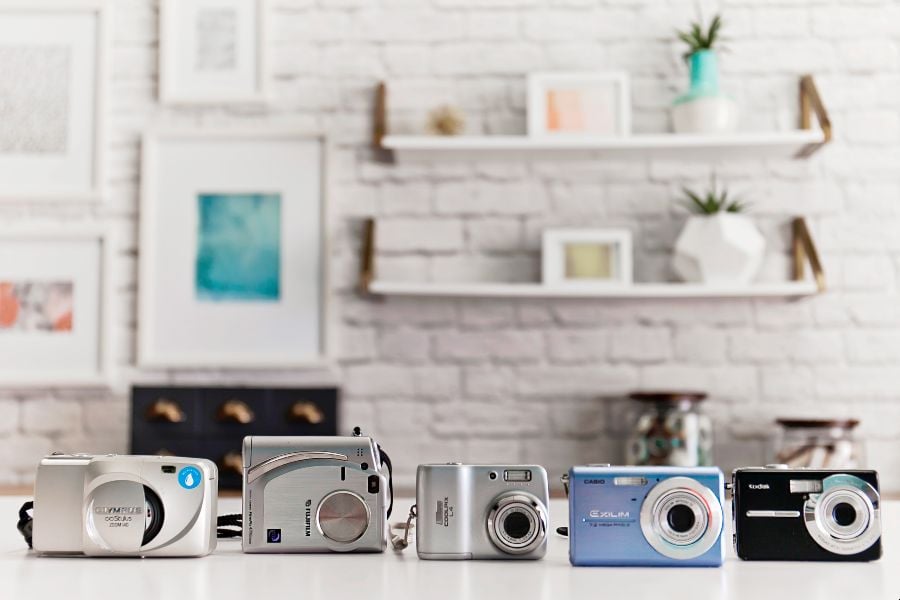
Digital photography eliminated a major barrier to taking pictures: cost.
With film, each click of the shutter had a price - first to purchase the film itself, and then to develop it. Although the price of film photography had decreased significantly over the course of the 20th century, as the technology aged and improved, costs could still easily run at least $10 for each roll used.
By contrast, a click of the digital shutter to take a photograph was free. Cost per image only became a factor when the photographer chose to print out an image. With this new freedom, photographers began clicking away, taking huge volumes of photos.
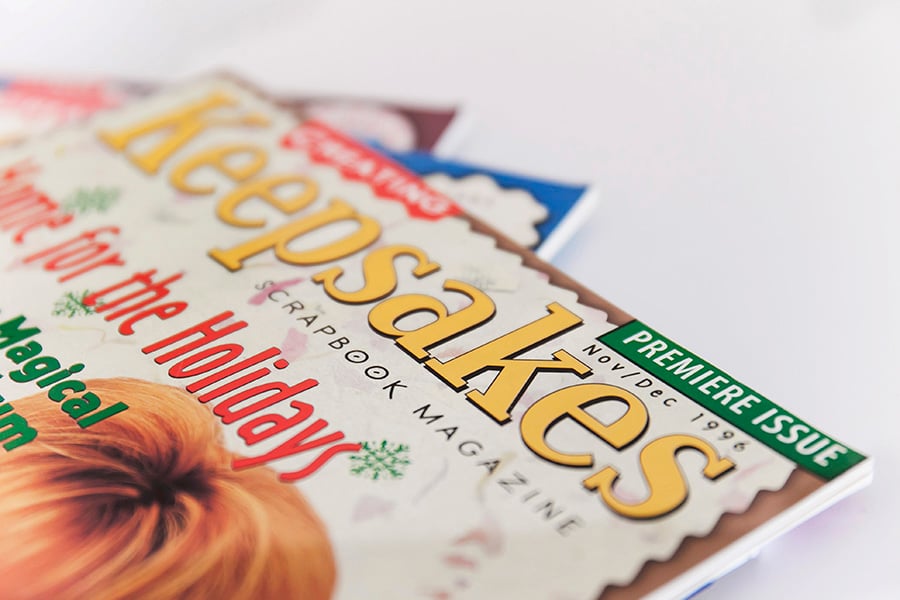
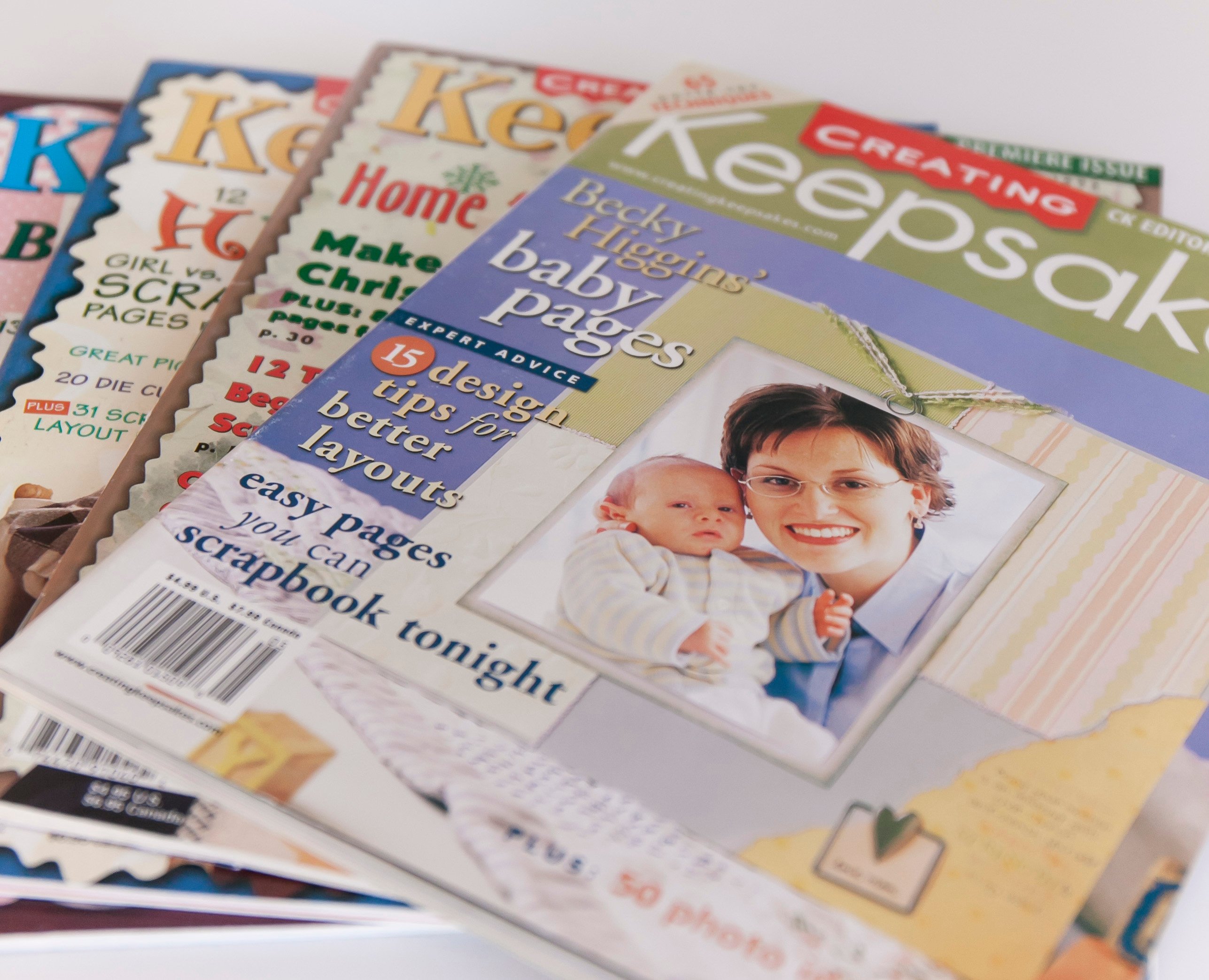
Creative Memories, Close to my Heart, and other home-based retailers of scrapbooking supplies were also very important to the growth of the hobby. Independent representatives for these companies held parties in their homes to teach friends and family members how to scrapbook, and sell the supplies needed in order to do so. Creative Memories, which was founded in 1987, became the largest home-based retailer and saw meteoric growth through the 1990s and early 2000s. Creative Memories representatives were both instrumental to the growth of the hobby and benefited from the rise in popularity at the same time. In 2004, at their peak, Creative Memories representatives drove over $400 million dollars in retail sales.
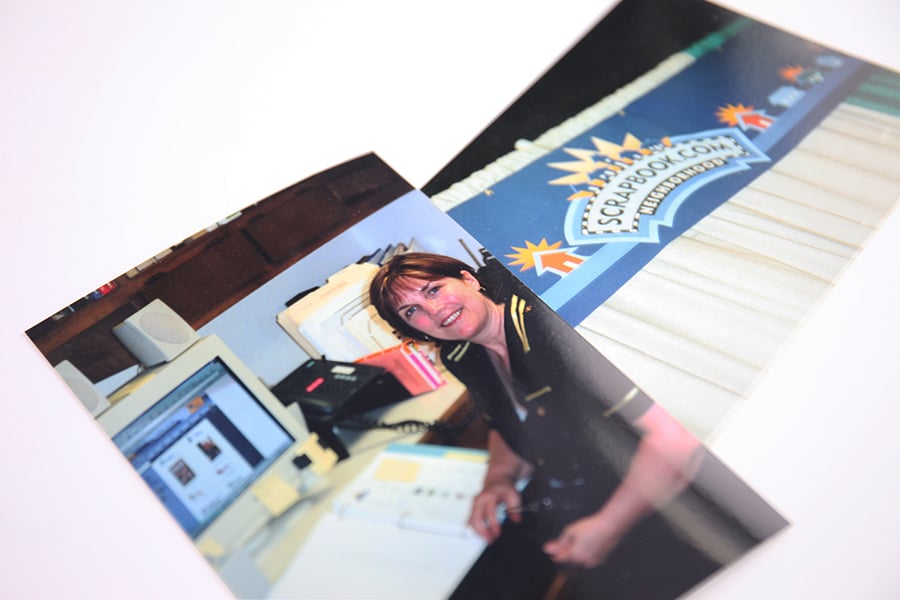
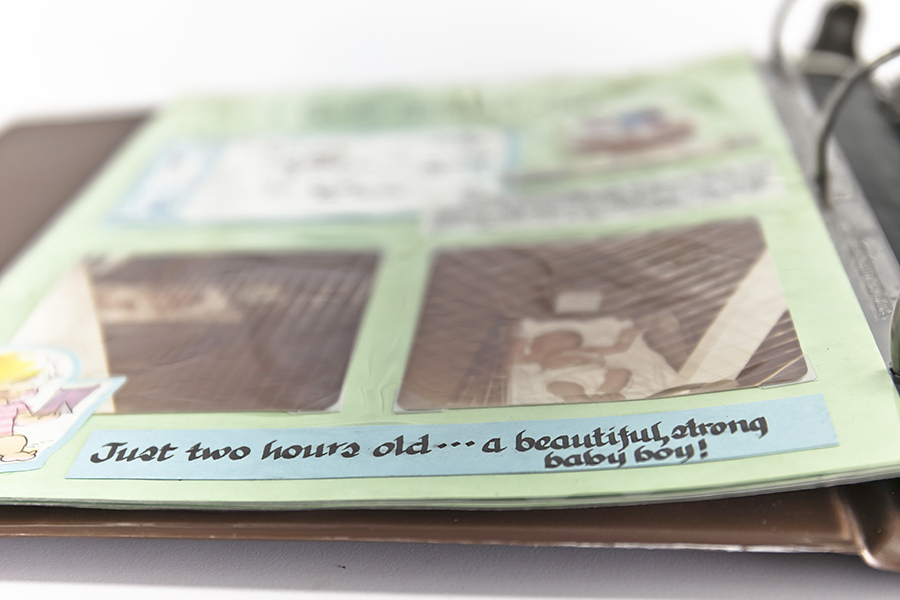
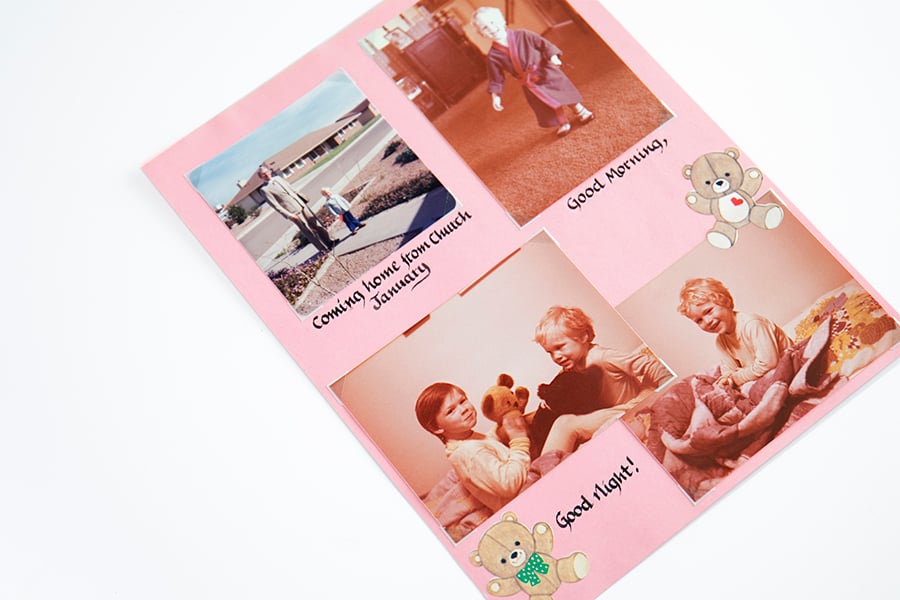
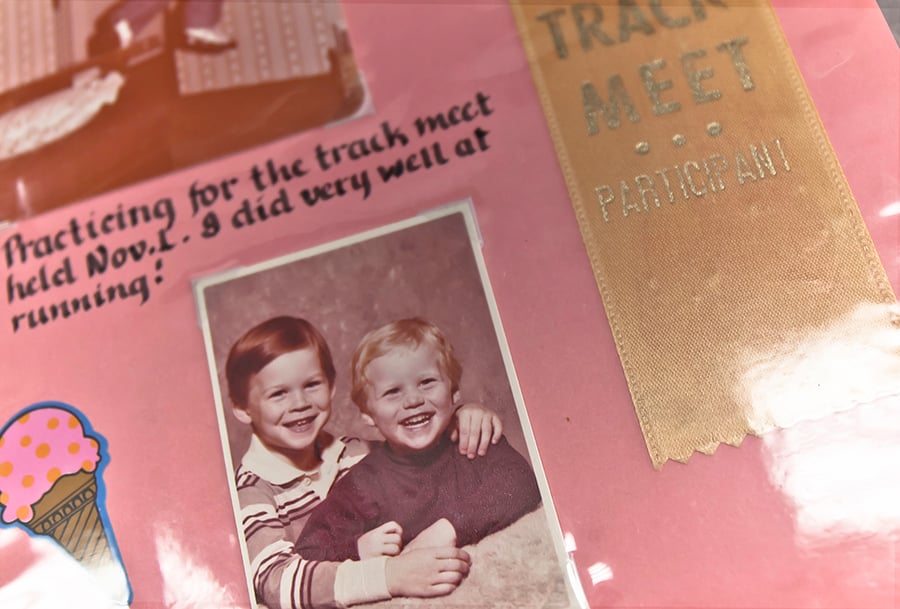
The first mobile camera phone was introduced in 2000, although it wasn’t until about 5 years later that camera phones gained enough traction, and quality, to be truly useful. With the development of quality smartphone cameras, personal photography was transformed again.
Like the Brownie had 100 years earlier, digital photography and the camera phone changed - not just how many photos we could take, but the type of photos that people took. The ubiquitous presence of our smartphones in our pockets or purses, at an arm's reach, meant that taking photos no longer required planning ahead or remembering to get out the camera and take it with us. Now, our camera is omnipresent. It's ready to use at a moment’s notice. We can and do use photography now to record the everyday minutiae of our lives, not just the big events. Now, we take pictures of our food, our pets, or the weather on a regular basis.
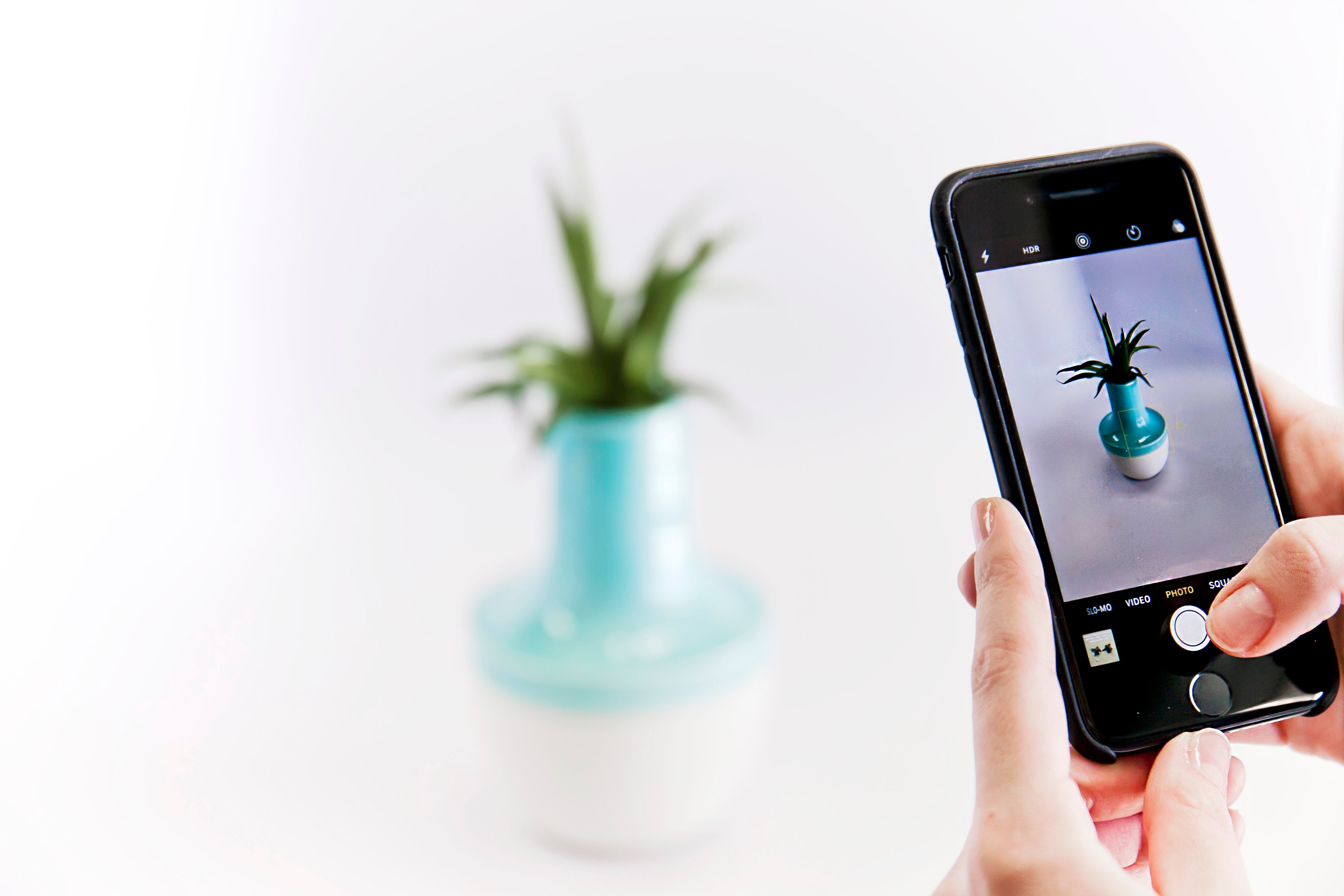
Between the removal of cost barriers, with digital photography, and the constant use of smartphone cameras, scrapbookers in the 21st century began to be flooded with photos. Having enough photos is no longer a problem. Many were now taking the volume of photos in a month that they had previously taken in a year with film.
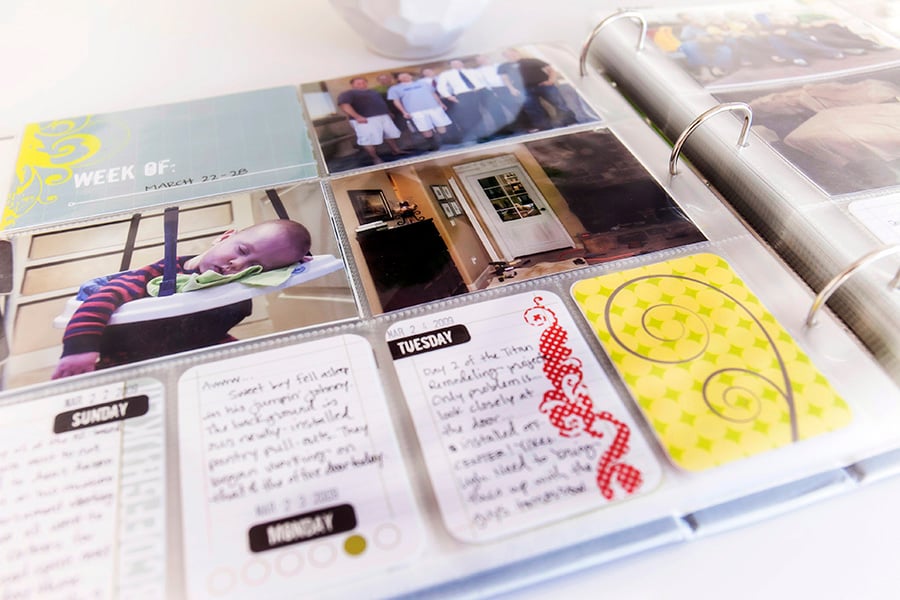
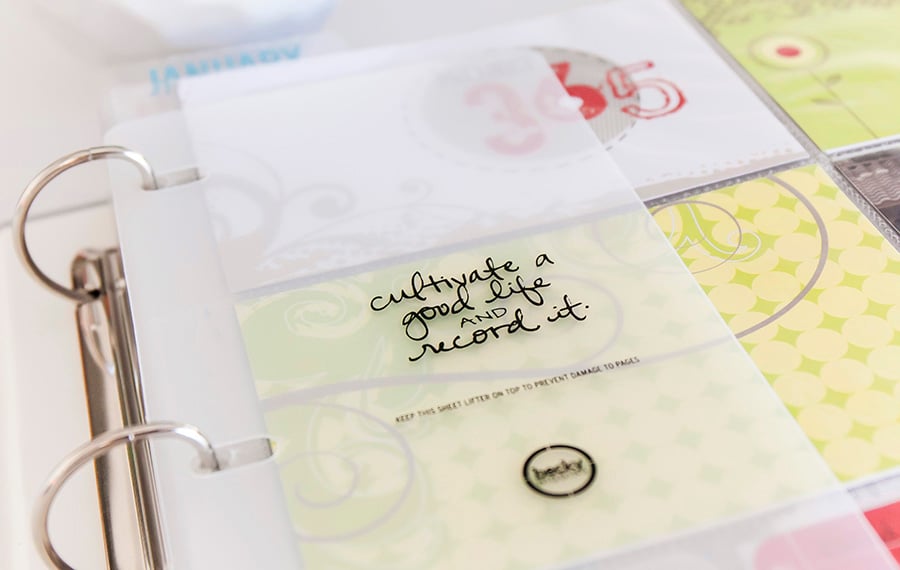
In late 2009, Becky Higgins left Creating Keepsakes and launched her own company to introduce the Project Life system. Project Life followed in the footsteps of Project 365 by offering kits of decorative cards that could be placed alongside photos in pocket-style plastic protectors. For scrapbookers, Project Life helped answer the question of what to do with all of the new “everyday life” photos they were accumulating. It also simplified the scrapbooking process and lowered the barrier to entry for new scrapbookers. Project Life appealed to those who may have felt overwhelmed by scrapbooking and also became an entry point for people who had never scrapbooked before.
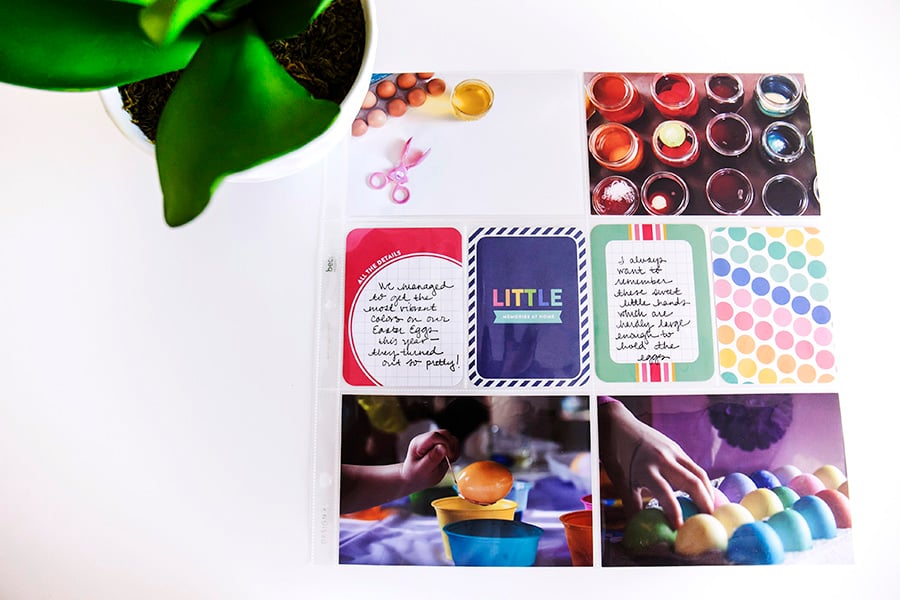
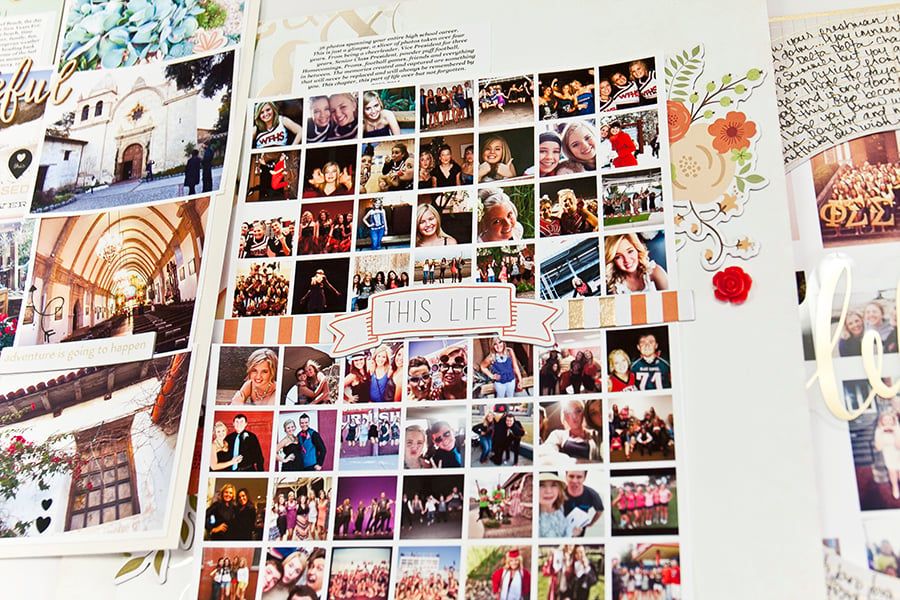
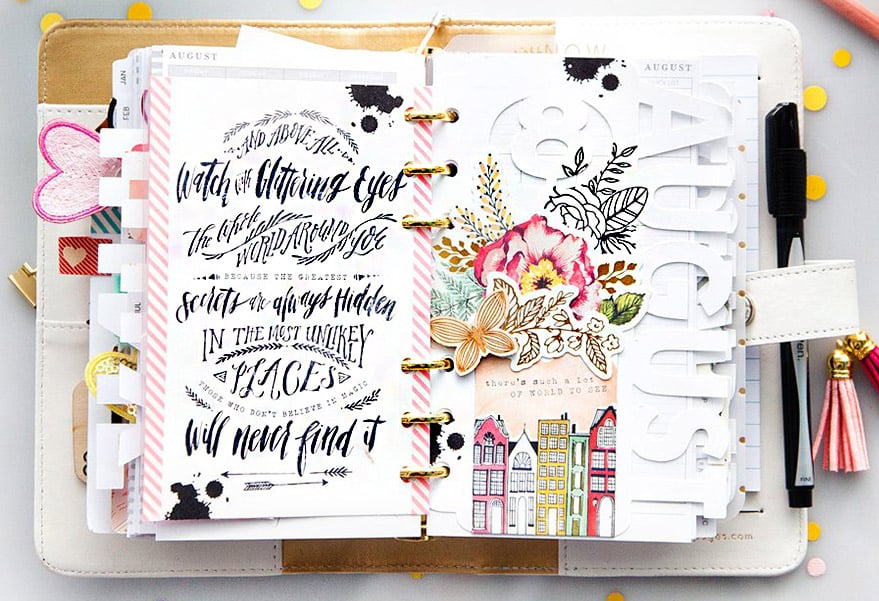
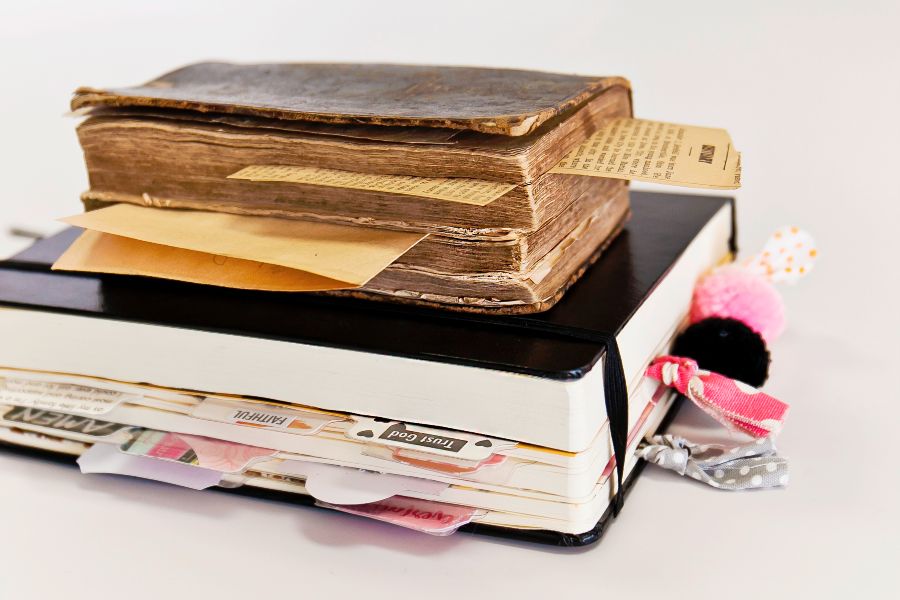
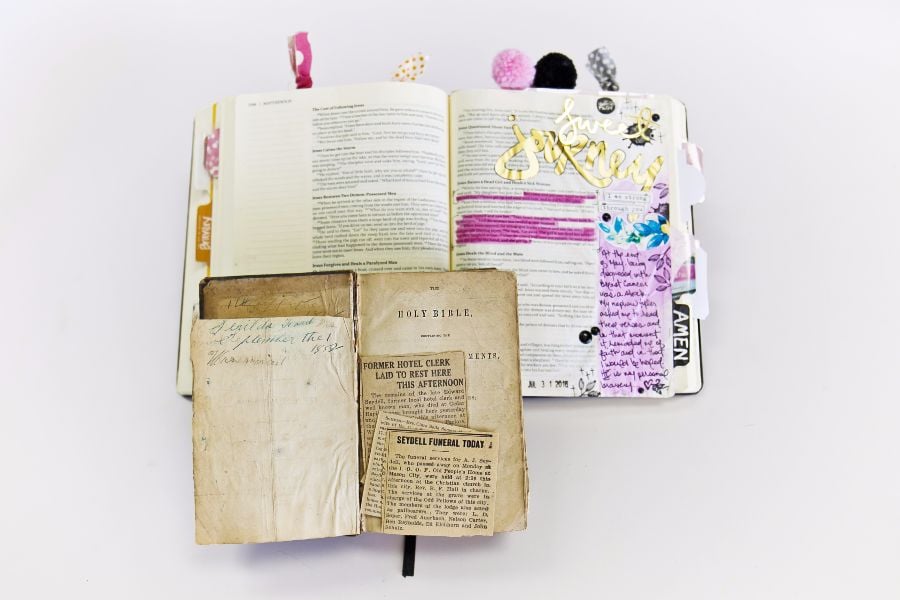
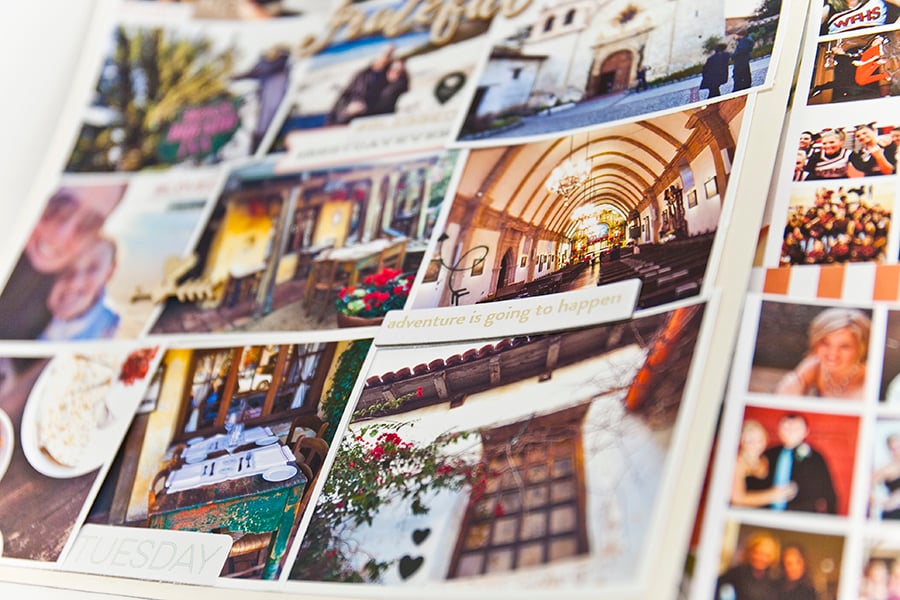
While the technology and techniques may have changed over the centuries, one thing has remained the same – the human urge to record our history and tell our stories. Whether you call it a commonplace book, a grangerized book, a photo album or a scrapbook, one thing is for certain - scrapbooking leaves a legacy for future generations through beautiful, meaningful, handmade self-expression.
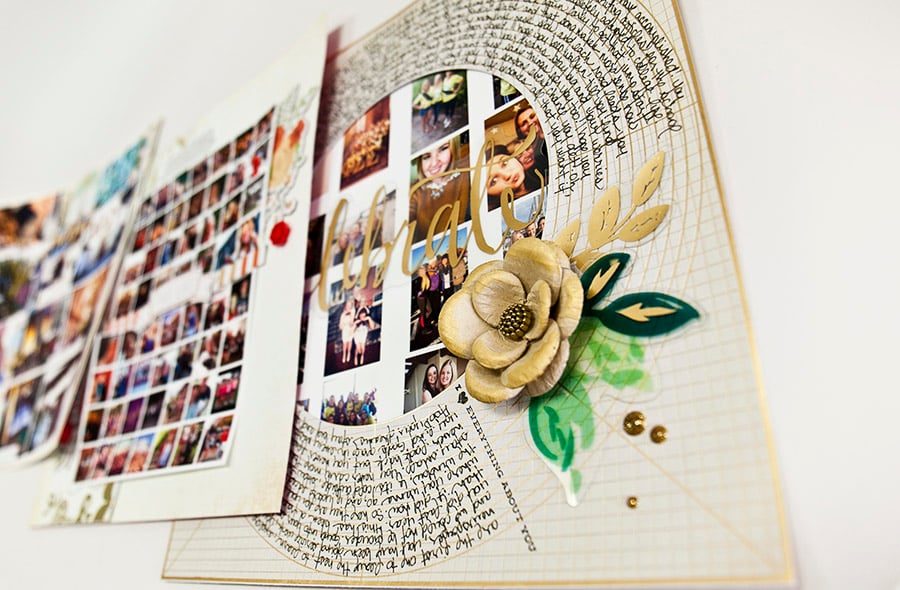
The Birth of Modern Scrapbooking
If you had to pinpoint exactly where today's form of scrapbooking originated, the birth of modern scrapbooking is generally accepted to have occurred in 1980 at a genealogy event called The World Conference on Records. Marielen Christensen was invited to the Church of Jesus Christ of Latter-Day Saints event in Salt Lake City to display her 3-ring binder albums (50 of them!) full of decorated scrapbook pages that she had begun creating a few years earlier. Christensen used archival-safe materials and put her scrapbook pages in clear page protectors - something done for the first time. She also introduced a unique photo and record-keeping system. The concept resonated with Mormon church members, whose faith values family and genealogy research.
From left
to right: Photograph of Marielen Christensen and her husband AJ in 1979.
The Keeping Memories Alive booth at the World Conference of Records.
Marielen looking at a scrapbook with two of her children.
In 1981, Christensen opened the first store devoted to scrapbooking called
Keeping Memories Alive. The store, located in Spanish Fork, Utah,
became a destination for scrapbookers. Scrapbookers from around the
country would travel to Utah to visit the Keeping Memories Alive store.
Soon after, the Christensens also started a mail-order catalog for those
who could not make the trip.Note: Jill Davis, Scrapbook.com Founder, was inspired by Marielen's ideas and innovations. She made several trips to the Keeping Memories Alive store in Spanish Fork, Utah, in the early 1980s to purchase scrapbooking supplies.

Two of Marielen Christensen's original scrapbook pages. One from 1976 and the other from 1979.

A close-up
of one of Christensen's early scrapbook pages in a clear protective
page protector. Christensen was the first to utilize page protectors to
protect and store her scrapbook pages. This was a key advancement in
modern scrapbooking.
Christensen’s original scrapbook pages were, by necessity, on 8 ½" x
11" letter sized paper. She stored the pages in clear plastic sheet
protectors inside three ring binders. This innovative use of page
protectors was a key shift in scrapbooking for many reasons. Clear page
protectors helped protect photos and pages from damage, but they also
paved the way for a new era of page-by-page creation. The original,
Keeping Memories Alive scrapbooking papers were also 8 1/2" x 11", and
many of them were adapted from stationery designs.By the late 1990s, however, the standard scrapbook page size was shifting to a larger 12" x 12" square page that better accommodated 4” x 6” photos. Albums began to be available in a variety of types of bindings: strap hinge, post, and ring, to suit a growing community's growing needs. Some strap hinge albums still had paper pages similar to those of the early scrapbooks, but albums full of sheet protectors (to allow each page to have a different background paper) were increasingly becoming the scrapbook format of choice.

An 8 1/2" x
11" page on the left (from 1999) before the transition and a 12" x 12"
page on the right (from 2002) after the transition to larger pages. Both
pages were created by Jill Davis - Scrapbook.com Founder.
Digital Cameras
Around the time that color film was just becoming the standard for personal photography, the first digital camera had already been invented. Kodak engineer, Steve Sasson, developed the first digital camera, a prototype, in 1975. However, it would be a few more decades before digital photography became common (and affordable) consumer technology. And when it did, its takeover of the photography world was rapid.The first consumer digital camera was launched to the photography market in 1990. By 2006, Nikon and Canon had stopped development on new film cameras and had shifted all new camera production to entirely digital models. It had been barely over 15 years since the first digital camera was sold, and now film was going the way of the horse and buggy.

Different types and models of Digital Cameras from the mid-1990s to the mid-2000s.
With film, each click of the shutter had a price - first to purchase the film itself, and then to develop it. Although the price of film photography had decreased significantly over the course of the 20th century, as the technology aged and improved, costs could still easily run at least $10 for each roll used.
By contrast, a click of the digital shutter to take a photograph was free. Cost per image only became a factor when the photographer chose to print out an image. With this new freedom, photographers began clicking away, taking huge volumes of photos.
The Advent of Local Scrapbook Stores
By the late 1990s, several local scrapbook stores had popped up around the country. These stores provided a large selection of scrapbook albums, papers, and other products. The Local Scrapbook Store phenomenon continued into the 2000s. These early local scrapbook stores were a response to the booming interest in scrapbooking, but there were also instrumental in helping spread awareness of scrapbooking and enthusiasm for it.Learning to Scrapbook
The 1990s also brought the inception of several scrapbooking magazines. Creating Keepsakes, Memory Makers and others saw meteoric growth during the second half of the 1990s and early 2000s. These magazines taught people across the globe how to scrapbook and they were also instrumental in spreading awareness and interest in the booming hobby. By the late 1990s scrapbooking magazines could be found on magazine stands of chain bookstores and retail stores across the United States.
The first issue of Creating Keepsakes magazine published November 1996.

Several early issues of Creating Keepsakes magazine from the mid-1990s.
During the 1990s scrapbookers also began gathering at events called
"crops" where they could share supplies and teach each other new
techniques. These social scrapbooking gatherings, which still happen
today, are similar to quilting gatherings called quilting bee's that were popularized early in the 20th century.Creative Memories, Close to my Heart, and other home-based retailers of scrapbooking supplies were also very important to the growth of the hobby. Independent representatives for these companies held parties in their homes to teach friends and family members how to scrapbook, and sell the supplies needed in order to do so. Creative Memories, which was founded in 1987, became the largest home-based retailer and saw meteoric growth through the 1990s and early 2000s. Creative Memories representatives were both instrumental to the growth of the hobby and benefited from the rise in popularity at the same time. In 2004, at their peak, Creative Memories representatives drove over $400 million dollars in retail sales.

A photograph of Jill Davis on the day Scrapbook.com was launched in 1999.
Jill Davis, an artist and calligrapher, was one of the earliest
pioneers in the modern scrapbooking movement. She had been inspired
by Marielen Christensen in the early 1980s and started creating her own
scrapbooks and developing her own unique scrapbooking techniques and
ideas soon after. By the late 1990s, she was teaching sold-out scrapbook
classes in Arizona. Davis wanted to share her ideas and love for
scrapbooking to a larger audience. In 2000, she and her husband Charlie
launched Scrapbook.com, a place where Jill, and others, could teach the world how to scrapbook.
One of
Jill Davis' earliest scrapbooks. Jill's early style was inspired by
Marielen's scrapbooks and Jill also used clear page protectors as well,
based on Christensen's system.

An 8 1/2" x
11" scrapbook page created in the early 1980s. Jill used calligraphy
writing style for her captions and journaling on her pages.

One of
Jill's early scrapbooks. This photo showcases current Scrapbook.com CEO,
Drex Davis, on the left (Age 5) and current Scrapbook.com President,
McKane Davis (Age 3).
Later, Scrapbook.com created an online project gallery where people
across the globe could take photos or scans of their creations and
upload them in one place online to share. Soon, scrapbookers everywhere were teaching and inspiring each other in a way that seemed unimaginable just a few years earlier.Note: During the early 2000s several additional sites like Two Peas in a Bucket, Scrapjazz, DMarie, and a variety of other sites were also instrumental in connecting scrapbookers across the globe and helping to spread knowledge about the craft.
Smartphone Cameras
Now, our camera is omnipresent. It's ready to use at a moment’s notice. We can and do use photography now to record the everyday minutiae of our lives...
The advent of digital photography was a revolution in itself for
scrapbooking, but when digital cameras were added to smartphones, it
caused a second revolution.The first mobile camera phone was introduced in 2000, although it wasn’t until about 5 years later that camera phones gained enough traction, and quality, to be truly useful. With the development of quality smartphone cameras, personal photography was transformed again.
Like the Brownie had 100 years earlier, digital photography and the camera phone changed - not just how many photos we could take, but the type of photos that people took. The ubiquitous presence of our smartphones in our pockets or purses, at an arm's reach, meant that taking photos no longer required planning ahead or remembering to get out the camera and take it with us. Now, our camera is omnipresent. It's ready to use at a moment’s notice. We can and do use photography now to record the everyday minutiae of our lives, not just the big events. Now, we take pictures of our food, our pets, or the weather on a regular basis.

Between the removal of cost barriers, with digital photography, and the constant use of smartphone cameras, scrapbookers in the 21st century began to be flooded with photos. Having enough photos is no longer a problem. Many were now taking the volume of photos in a month that they had previously taken in a year with film.
Pocket-Page Scrapbooking
Then, in January 2008, Creating Keepsakes Magazine launched a kit called Project 365 as part of their "kit of the month" program. Creating Keepsakes Creative Editor Becky Higgins designed the kit as a “photo a day” album, and it featured page protectors with individual pockets to insert photos and decorative cards. Few could imagine, at the time, that this simple kit would be the genesis of another major shift for scrapbooking.
One of Becky Higgins' original Project 365 albums showcasing pocket-page scrapbooking.
Pocket-page protectors had been available to scrapbookers for quite
some time, but it wasn’t until the Project 365 kit that pocket-page
scrapbooking received wide-spread adoption and captured the imagination
of scrapbookers around the world. Pocket-page scrapbooking challenged
the very definition of a scrapbook as photos on a blank page and
scrapbooking expanded to include putting things in pockets.
In late 2009, Becky Higgins left Creating Keepsakes and launched her own company to introduce the Project Life system. Project Life followed in the footsteps of Project 365 by offering kits of decorative cards that could be placed alongside photos in pocket-style plastic protectors. For scrapbookers, Project Life helped answer the question of what to do with all of the new “everyday life” photos they were accumulating. It also simplified the scrapbooking process and lowered the barrier to entry for new scrapbookers. Project Life appealed to those who may have felt overwhelmed by scrapbooking and also became an entry point for people who had never scrapbooked before.

A more recent Project Life pocket-style page created by a Project Life customer.
Note: The rise of pocket scrapbooking did not replace 12” x 12" scrapbook pages. Pocket cards now reside side by side with more traditional 12” x 12” pages as staples in many companies’ scrapbook lines – and in scrapbookers’ supply cabinets and albums. Many scrapbookers utilize both types of pages, sometimes even in the same album, to meet their needs for a particular project.
Note: If you are interested in pocket-page scrapbooking you can take our free video class and learn more here.
Social Media and Photography

Recent layouts from renowned scrapbooker Dedra Long showcasing square Instagram style photos.
As the camera phone has come to dominate personal photography,
photography trends from social media are finding their way into
scrapbooks. The most prominent has been the influence of Instagram.
Where once photography (and thus by extension, the scrapbook) was prized
for its realism, now, scrapbooks are being filled with photos that have
been stylized with filters that create artistic effects. Instagram,
which initially only allowed square photos, also led to an influx of
scrapbooking products created for the square photo.Modern Planners, Journals and Recordkeeping
Proving that old ideas can be new again, the newest form of scrapbooking has roots in one of the oldest. Many scrapbookers are reinventing traditional weekly day planners as embellished daily journals and personal records. These planners are reminiscent of the centuries-old tradition of the commonplace book – an assemblage of notes and information from a person’s life. In the modern incarnation, planner enthusiasts are adding photos, stamps, stickers, and other embellishments to their handwritten notes to create a result that is both decorative and also a historic document.
A modern planner used for calendaring, record-keeping and journaling.
Bible journaling has also exploded in popularity in recent
years. In fact, like Granger's old Kitto Bible, modern Journal Bibles
are created with blank space in the margins for illustrations, stickers
and journaling. Many scrapbookers will record their thoughts in the
margin of their bible and personalize them. These bibles act as
inspiring faith-journals and are given as keepsakes for future
generations.
An 1800s
bible that was used for family record keeping (top) contrasted with a
modern bible used for journaling and documentation today (bottom).

An antique bible used for family record-keeping and documentation compared to a modern day Bible with bible journaling
Today's Scrapbooks

Modern scrapbook layout by Dedra Long.
Today's modern scrapbook layouts combine handwritten entries (like
those in commonplace books) with doodles (like those in grangerized
ones). They contain professional portraits (like those of the 1800s)
with casual photographs (like those popularized in the early 1900s). The
modern-day scrapbook is the culmination of its history.While the technology and techniques may have changed over the centuries, one thing has remained the same – the human urge to record our history and tell our stories. Whether you call it a commonplace book, a grangerized book, a photo album or a scrapbook, one thing is for certain - scrapbooking leaves a legacy for future generations through beautiful, meaningful, handmade self-expression.

A modern scrapbook page created by
Dedra Long. This page combines several elements including journaling,
titles, decorative 3-D memorabilia and color photos.
Subscribe to:
Post Comments
(Atom)


Sign up for Email Notifications of New Posts
Grab my button!


My latest Instagrams

Powered by Blogger.

-
This article is from Scrapbook.com The Birth of Modern Scrapbooking If you had to pinpoint exactly where today's form of scrapbook...
-
Demonstration of a reverse embossed technique, using the Bellish! Ezy Press Roller Die Cutting and Embossing Machine, Swinging Flowers ...
-
FREE Project Sheet Downloads! Follow our project sheets with full instructions to Create It Yourself (CIY). LIMITED TIME Stamp Value Bund...
-
Hello Everyone, I am back on the blog today sharing these two beautiful pages. My Scrapbooking classes are taking off and today I have two...
-
On Saturday I attended our TTD when Kaszazz unveiled their NEW CATALOGUE and products. I abolutely love the new papers and stamps and am loo...
-
Hello Everyone, This is my page Waiting using the lovely new paper from the Happy Hello Range - Speckled Posies. This paper was made for t...

















0 comments:
Post a Comment